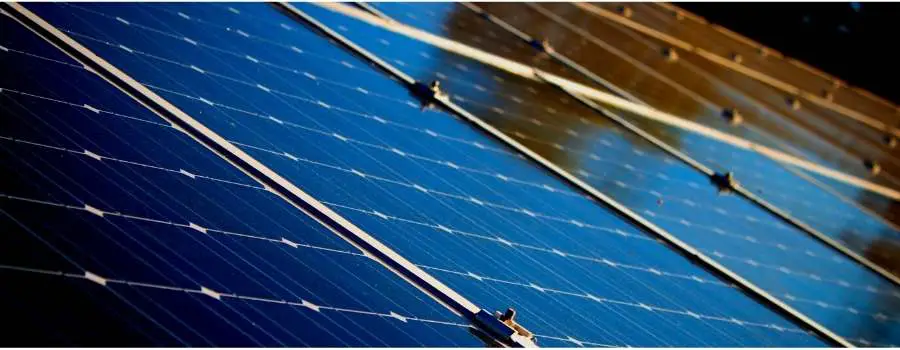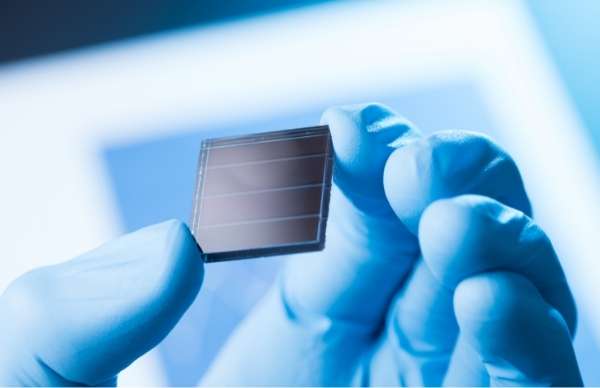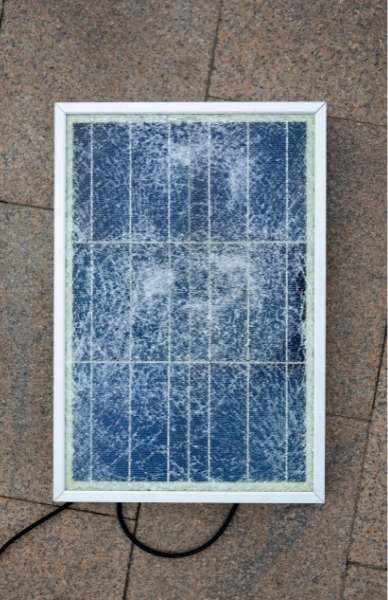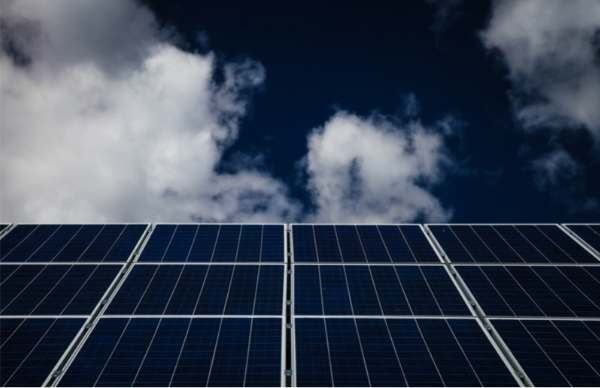
If you’re looking to install a solar panel system in your home, it’s important to understand how shade affects solar panel efficiency.
You also need to take into account that shade doesn’t just mean shade caused by cloud cover, but also any that is caused by nearby structures, trees, mountains…even your neighbor’s giant, inflatable Christmas decorations.
Table of Contents
Do Solar Panels Work in the Shade?
Solar panels can still function in shaded conditions, though their efficiency is reduced compared to full sunlight exposure. Modern solar panel technology, including photovoltaic cells, is capable of generating electricity from diffused or indirect sunlight.
Here’s a breakdown of how their efficiency can be effected due to varying amounts of sunlight:
| Lighting Condition | Efficiency |
| Full Sunlight | High |
| Indirect Sunlight | Moderate |
| Moderate Shade | Reduced |
- Factors Influencing Performance:
- Amount of Shade: More shade leads to greater reduction in efficiency.
- Panel Type: Some panels (like monocrystalline) are better in low light.
- Inverter Type: Microinverters or power optimizers help mitigate shade impact.
- Cloudy Weather Performance: Panels generate less energy but remain functional.
The degree of impact from shade varies based on the amount of shade, type of solar panels, and the inverter technology used. While optimal performance is achieved in direct sunlight, solar panels remain a viable energy source even in less than ideal lighting conditions (1).
Solar panels can operate in shaded conditions, but their efficiency varies. Here’s a breakdown:
- Efficiency in Different Lighting Conditions:Lighting ConditionEfficiencyFull SunlightHighIndirect SunlightModerateShadeReduced
- Factors Influencing Performance:
- Amount of Shade: More shade leads to greater reduction in efficiency.
- Panel Type: Some panels (like monocrystalline) are better in low light.
- Inverter Type: Microinverters or power optimizers help mitigate shade impact.
- Cloudy Weather Performance: Panels generate less energy but remain functional.
How Solar Panels Work in Shade and Indirect Sunlight
Solar panels, designed to convert sunlight into electricity, can surprisingly function in shade and indirect sunlight. This section delves into the science behind this capability.
Solar panels consist of photovoltaic (PV) cells that create electricity by absorbing photons, even in low-light conditions (2). While direct sunlight provides optimal performance, PV cells can still generate a significant amount of power in shaded areas or under cloudy skies.
This remarkable feature is due to the cells’ sensitivity to a wide spectrum of light wavelengths, allowing them to remain productive even when direct sunlight is not available.
Understanding this principle can help in optimizing solar panel installations for various environmental conditions.
- Photovoltaic (PV) Cell Functionality: PV cells in solar panels can absorb photons to create electricity, even in low-light or shaded conditions.
- Efficiency in Various Light Conditions:
- Direct Sunlight: Offers optimal performance for solar panels.
- Indirect Sunlight: Panels can still produce a significant portion of their potential output.
- Shade: Panels generate less electricity, but certain types (like monocrystalline) are more efficient in these conditions.
- Factors Influencing Performance in Shade:
- Type of Shade: The amount and duration of shade affect performance differently.
- Panel Type: Different solar panel types react differently to shaded conditions.
- Inverter Technology: The type of inverter can influence how well solar panels operate in the shade.
- Cloudy Weather Impact:
- Solar panels can still function on cloudy days, albeit at reduced efficiency.
- Light diffused through clouds can still be captured by solar panels.
- Energy Storage: Using solar batteries can help store energy generated even in less-than-ideal conditions for later use.
Which Solar Panels Work Best in the Shade?
Half-cut solar panels stand out from other types because they offer better performance in shady conditions. Still, that’s not to say that this kind of solar panel will work in low-light conditions. Like all solar power systems, at least some sunlight is necessary to generate electricity.
Half cut solar panels are standard, residential solar panels that have had their solar cells partially cut, or “half cut.” Half-cut solar panels offer a few advantages over traditional solar PV systems.
The first is increased efficiency in shaded environments. This occurs because the cell is split into two halves, with each half performing optimally under different lighting conditions. So while one half of the cell is busy gathering energy from direct sunlight, the other half can gather energy from light that’s reflected off surrounding surfaces.
Half-cut solar panels are also less prone to soiling and dust accumulation, which can lower efficiency by up to 30%.
The downside of using half-cut solar cells is that they are more expensive to manufacture. Additionally, since the cells are cut in half, the panel is less efficient at converting light into electricity and therefore produces less power than a standard solar panel of the same size.
That said, for homes with significant shading issues, or those located in areas with lower levels of sunlight, half-cut solar panels may be a better option than traditional panels.
Why Do Half-Cut Solar Cells Work Well In The Shade?
In general, half-cut solar cells work better in the shade because it doubles the number of cells on a typical solar panel. While one half of the cell is gathering energy from direct sunlight, the other half can gather energy from light that’s reflected off surrounding surfaces.
One thing that makes half-cut solar cells stand out from other types is that they work better than standard ones in the shade.
Interestingly enough, that’s not because of the cells themselves but how they connect to one another.

Remember: shading is a problem because standard cells connect to each other in a string. That’s also known as ‘series wiring.’ So when one cell experiences shade, it prevents the electricity from flowing through.
Half-cut solar cells also have series wiring. However, being half the size of regular solar cells means two things:
- Solar panels have double the total number of cells (because they’re all cut in half).
- Solar panels have double the total number of separate rows of cells.
So, when one half-cut cell experiences shading, only a smaller amount of power is lost compared to a full-sized solar cell.
Bottom line…a solar panel with half-cut cells loses less power to shading than one with regular, full-sized cells.
What Are The Disadvantages Of Half-Cut Solar Panels?
Typically, half-cut solar panels are more prone to defects during the manufacturing process and are more expensive to produce. That increased cost is then passed on to the consumer in the form of higher prices for the completed product.
So, the two big issues are going to be price and the increased potential for defects during the manufacturing process.
Pricing
People call them half-cut solar cells because manufacturers will take standard solar cells and cut them in half. That additional step in the manufacturing process will add to its costs, so the consumer pays a heftier price tag.
Number Of Defects
As we saw earlier, half-cut solar panels have twice the number of total cells. That means there’s a much higher chance for defects that could occur on a half-cut solar panel.

That’s why it’s critical that you only purchase solar panels from reputable sellers. Big names in the business will have stricter quality control. So, your chances of experiencing defects are much lower when you buy from them.
Impact Of Defects
When you cut a solar cell in half, you’ll have twice as much of everything. There will be twice as much soldering, as well as twice the potential faults and double the potential impact of those faults.
Again, that’s why you must only ever buy from recognized manufacturers. Firstly, the odds of these faults or defects are lower.
But, more importantly, if there are any defects, you’re more likely to get excellent after-sales support when shopping from a reputable solar cell company.
With all of that said, homes with significant shading issues…or those located in areas with lower levels of sunlight…half-cut solar panels may be a better option than traditional panels.
Why Does Shade Reduce Solar Panel Efficiency?
In general, solar cells are made up of silicon crystals that convert sunlight into electricity. These crystals only work when they are directly hit by sunlight, and so if they are covered by shade, they won’t be able to produce any power.
Solar cells can still generate some power when partially shaded, but the amount will be significantly lower than if they were receiving direct sunlight.
Shading can significantly affect the efficiency of your solar panels. But, you must understand that there are obvious and not-so-obvious reasons for why even a little bit of shade can have such significant effects.
Less Sunlight = Less Power Generation
Let’s start with the apparent reason. Solar panels work best when they capture as much direct sunlight as possible. Under those conditions, the panels will convert sunlight and generate electricity to the best of their abilities.
So, simply put, less direct sunlight causes a reduction in electricity generation by solar panels.
That’s also why it’s crucial to clean solar panels a minimum of once or twice a year. As several months pass, dust, dirt, and other debris will cover the solar panel’s surface. That will restrict the amount of direct sunlight that can pass through and reach the panel’s solar cells.
So, the dirtier your solar panels become, the less power they’ll generate overall.
Amount Of Shade Isn’t Always Even
You must also understand that the effects of that shading are not proportionate. For example, one prominent study shows that even if you only cover 1 out of 36 cells in the shade, the entire system will generate 75% less energy.
That’s right! Just a tiny bit of shading can affect most of the panel’s efficiency. On good days, solar panels operate at about 20% efficiency (compared to 40-50% efficiency of traditional fuels.)
That brings us to the second and less-obvious reason shade causes such a dramatic reduction in solar panel efficiency.
In short, it’s because of the wiring that connects the solar cells. You see, a solar panel consists of a large number of solar cells wired together in one unit.
Manufacturers string solar cells together to form that solar panel. So, any electricity that one cell captures has to flow through the next cell, and so on. That continues until the electricity flows out of the panel and into the rest of the solar power system.
When one cell is affected by shading, it blocks the flow of any electricity through it. That causes a domino effect, which is why even the tiniest bit of shading can cause such a reduction in the solar panel’s overall ability to generate electricity.
This issue is so significant that it has a specific term: ‘shade loss.’

Optimizing Solar Panels for Shaded Areas
Enhancing solar panel efficiency in shaded areas involves both technological advancements and strategic installation techniques. Key strategies include:
- Using Microinverters or Power Optimizers: These devices allow panels to operate independently, reducing the impact of shade on the entire system.
- Strategic Panel Placement: Positioning panels in the least shaded parts of a roof maximizes exposure to sunlight.
- Regular Maintenance: Keeping panels clean and free of debris ensures maximum light absorption.
- Choosing the Right Panel Type: Some solar panels, like monocrystalline, perform better in low-light conditions.
- Incorporating Solar Trackers: These devices adjust the position of solar panels throughout the day to optimize sunlight capture.
By employing these methods, solar panel systems can maintain higher efficiency even in areas with partial shading.
Managing Shade in Solar Panel Installations
To minimize shade’s impact on solar panel systems, homeowners and installers can employ these practical strategies:
- Conduct a Sunlight Assessment: Before installation, assess the area for potential shading throughout the year.
- Trim Overhanging Branches: Regularly trimming trees around the installation site can reduce shading.
- Opt for Elevated Mounts: Raising panels above potential shading objects can improve sun exposure.
- Use Shade-Tolerant Panels: Invest in panels designed for lower light conditions.
- Regular Monitoring: Keep track of the system’s performance to identify and rectify shading issues.
Myths and Facts about Solar Panels and Shade
- Myth: Solar Panels Don’t Work at All in the Shade
- Fact: Solar panels still function in the shade but at reduced efficiency. Modern technology allows them to capture diffused sunlight.
- Myth: A Little Shade Doesn’t Affect Output
- Fact: Even partial shade can have a disproportionate effect on output, as solar panels operate as a network. Shading one part can reduce the entire system’s efficiency.
- Myth: Cloudy Days Completely Stop Solar Energy Production
- Fact: Solar panels are less efficient on cloudy days but still generate electricity. The diffused light through clouds can still be harnessed, though at lower levels than on clear days.
- Myth: Shade Can Physically Damage Solar Panels
- Fact: Shade does not cause physical harm to solar panels. However, prolonged shading can lead to underutilization, affecting the panel’s efficiency over time.
Frequently Asked Questions
Do solar panels need direct sunlight to work effectively?
Solar panels work best in direct sunlight but can still generate electricity in indirect sunlight and shade, albeit at a reduced efficiency.
Can shade damage solar panels over time?
Shade itself doesn’t cause physical damage to solar panels, but prolonged shading can affect their efficiency and lifespan due to underutilization.
How can I improve my solar panel’s performance in shaded areas?
Consider using microinverters, positioning panels in less shaded areas, and opting for panels that perform better in low-light conditions.
Do solar panels work on cloudy days?
Yes, solar panels still function on cloudy days, producing less energy than on sunny days due to reduced light exposure.
What are the best types of solar panels for shaded areas?
Monocrystalline panels are typically more efficient in low-light conditions compared to other types.
